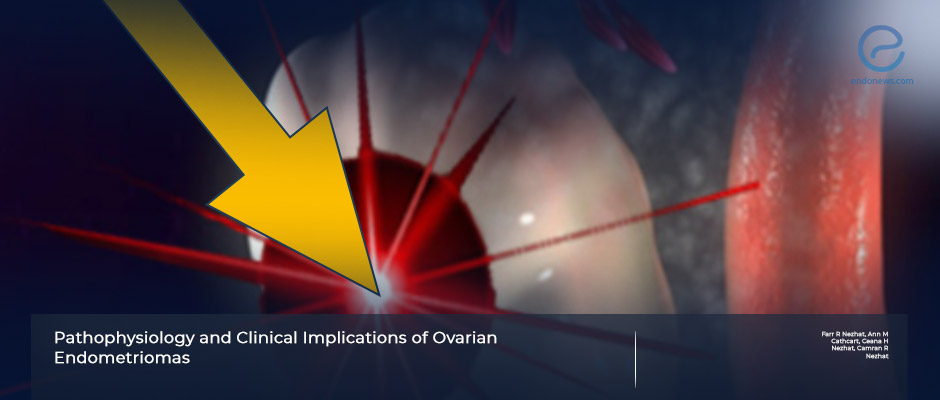Ovarian endometriomas revisited
May 24, 2024
There are unique facts in the well known entity of ovarian endometriomas
Key Points
Highlights:
- Endometriotic cysts (endometriomas, chocolate cysts) are located in the ovaries and range from small (1–3 cm), to large (20 cm or greater) masses.
- They differ from other endometriosis types seen inside or outside the pelvis.
Importance:
- A current hypothesis, originating from follicular or luteal ovarian cysts involved by endometriotic tissue, whether through invasion or metaplasia is attractive.
- Surgery makes the definitive diagnosis possible by histopathologic examination of endometriomas, besides being therapeutic.
What's done here:
- This is a narrative review of ovarian endometriosis by the members of world-renowned specialists from Weill Cornell Medical College.
Main key feature :
- Surgery is preferable for endometriomas, nevertheless, preoperative medical therapy may help symptom management besides improving operative outcomes.
- Retrospective studies have revealed that surgery is beneficial for optimal fertility besides reducing the risk of malignancy.
Lay Summary
Dr. Farr R. Nezhat and his world-renowned team have published their narrative review on ovarian endometrioma in a recent issue of the Obstetrics and Gynecology.
Endometriotic cysts (endometriomas) of the ovaries range from small (1–3 cm) to large (20 cm or greater) masses that affect 6% of patients with ovaries.
Endometriomas have potential risks of chronic pain, infertility, pregnancy complications, and also cancer transformation.
Two favored pathogenetic views for endometriomas are; endometriotic invasion or metaplasia of preexisting functional ovarian cysts and bleeding of ovarian endometriotic implants directly into the ovaries.
Though medical therapy can decrease endometrioma, it rarely leads to resolution and also ignores the golden standard of histopathologic diagnosis.
Surgery for endometrioma is valuable both for diagnosis, and symptom management in addition to achieving optimal fertility and cancer risk reduction.
However, there seems to be a need for stratification of benefits by cyst phenotype or size to achieve the best care in personalized medical management.
Revealing endometrioma phenotype or size in the design of further clinical studies on the management and implications will continue to better patient care.
Research Source: https://pubmed.ncbi.nlm.nih.gov/38626453/
endometrioma ovarian endometriosis histopathology

